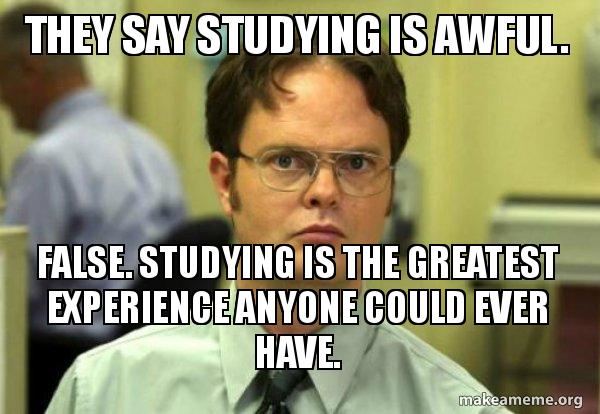Modeling critical thinking
Seeing both sites of an issue, being open to new evidence that disconfirms young ideas, demanding that claims be backed by evidence, deducing and inferring conclusions from available facts, solving problems, and so forth. (Daniel Willingham in Critical Thinking: Why is it so Hard to Teach)
I want to develop critical thinking in my students- the idea that one should always seek to see “both” sides of an issue and that one should always be prepared to disprove an idea. Though Willingham says “young idea,” I would substitute “all ideas, especially old ideas.” Because the institutionally-accepted facts comprise the tool set of what is referred to by Freire as the oppressor, Gramsci (and others) as the hegemony. Critical thinking from students should question these institutional ideas. “Authentic education is not carried on by “A” for “B” or by “A” about “B,” but rather by “A” with “B”” (Freire). bell hooks suggests that “professors [should] no longer assume the sole leadership role.” The implication being that I should cede some power in the classroom to my students.
These concepts make me (as an instructor) a bit nervous. Because by trying to empower my students to question the course content I am teaching, I am allowing the probability of showing my fallibility- the limitations of my own understanding and learning and the possibility of fumbling my words. I am showing myself to be “merely” a student, as well as a teacher and perhaps allowing students to become teachers.
But just because these ideas make me nervous doesn’t mean that I shouldn’t embrace them- or at least question why I shouldn’t allow them into my classroom with an open mind. The issue is not whether allowing/encouraging students to engage in these critical thinking is good for students, but rather what is stopping instructors from trying them. It seems the largest hurdles are our probably our own fears.
I will be questioned on concepts that I perceive as facts, and not be prepared to respond. & Topics about which I am unfamiliar will be brought up. These fears are based on our desire to not look stupid, some impostor syndrome feelings that I would suspect most new instructors have, and in the knowledge that we have also unquestionably ingested some “facts” rather than spend hours researching the topic. We should remove the shame in not knowing every answer- we cannot be experts in all topics, especially when teaching broad introductory courses.
Instead of fearing this situation, we should embrace this as an opportunity to delve deeper into our subject(s) and employ our own critical thinking. When caught off guard in a class, we should be prepared to show ourselves as fallible but still acknowledge that our job is to facilitate our students’ education. E.g. “That is a great question. I don’t remember off the top of my head, but I’ll look into it and put together something for next class…”
By allowing students to take on leadership (teaching) roles and myself to take on student roles, I will undermine my own authority. I would suspect that this fear is correlated with the instructor’s leadership experience and inversely correlated with the age difference between student/instructor. But one does not only have authority by lording that authority constantly over ones students. As instructors, we are invested with authority by the school. Nothing we do in class will change the fact that the institution has put students in a subordinate role to us.
We’ve been fed on ideas that a good leader/boss/instructor maintains control by being flawless, speaking with authority on all topics, being directive, not allowing people to question us, etc. However, not only do these ideas of good instructors enforce the hierarchical “banking concept” teaching that discourages critical thinking, but it is also forcing instructors into inauthentic roles. These good/ideal/traditional teaching attributes are based on cultural norms, norms which are based on “western,” patriarchal criteria. By rejecting these norms, we are fostering critical thinking among our students, and we are modeling successful critical thinking by being authentic teachers ourselves.
For cultural invasion to succeed, it is essential that those invaded become convinced of their intrinsic inferiority… Cultural invasion is, on one hand an instrument of domination and on the other the result of domination… [it] always involves a static perception of the world. (Freire in Pedagogy of the Oppressed)
Some references
Joe L. Kinchloe, “Paulo Freire (1921-1997)” in The Critical Pedagogy Primer (2004).
Paulo Freire. “Pedagogy of the Oppressed.” (2007).
Bell hooks, “Teaching Critical Thinking: Practical Wisdom.” (2010)

 As a graduate student, my habits became more refined. When I started taking courses that I knew would be useful my career, I made serious efforts at studying terms, taking thorough notes, and connecting information within and between courses. Content I did not believe would be relevant to me or I perceived as busy work received the minimal effort, and work that seemed relevant to my learning and my future career received more time and focus. When possible, I would choose paper and project topics that interested me or allowed me to pull in ideas from other courses. However, I simultaneously found myself motivated to earn good grades.
As a graduate student, my habits became more refined. When I started taking courses that I knew would be useful my career, I made serious efforts at studying terms, taking thorough notes, and connecting information within and between courses. Content I did not believe would be relevant to me or I perceived as busy work received the minimal effort, and work that seemed relevant to my learning and my future career received more time and focus. When possible, I would choose paper and project topics that interested me or allowed me to pull in ideas from other courses. However, I simultaneously found myself motivated to earn good grades.

